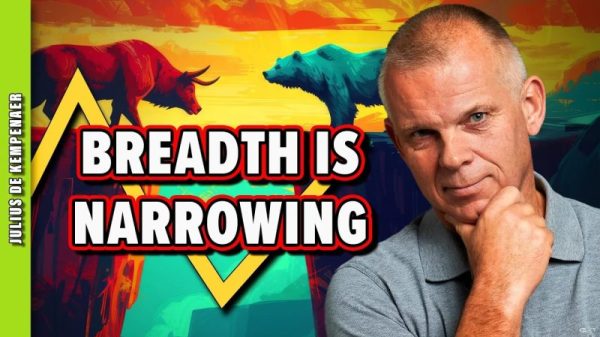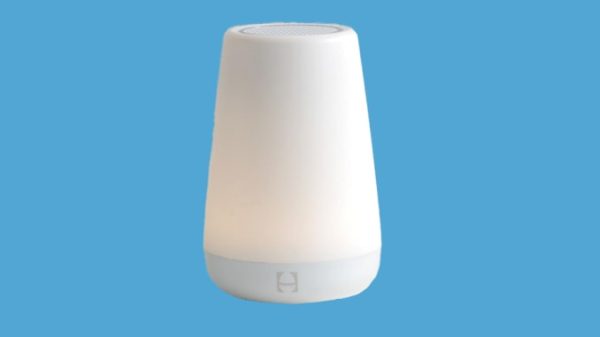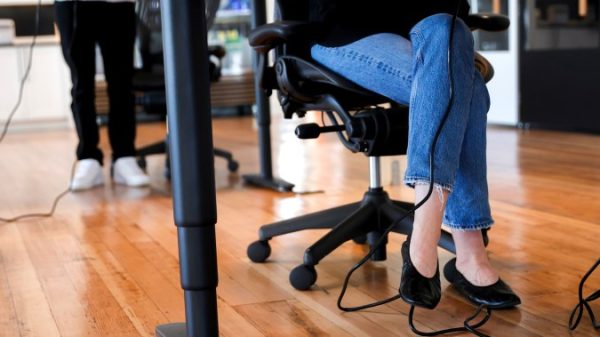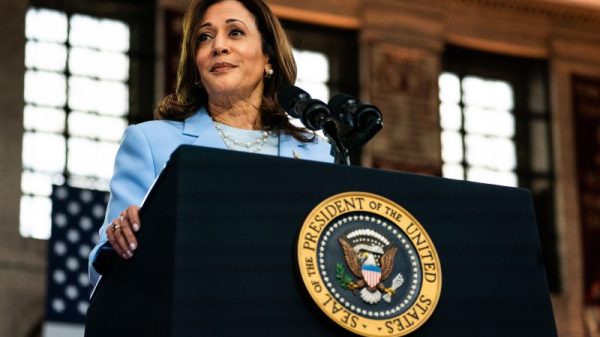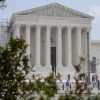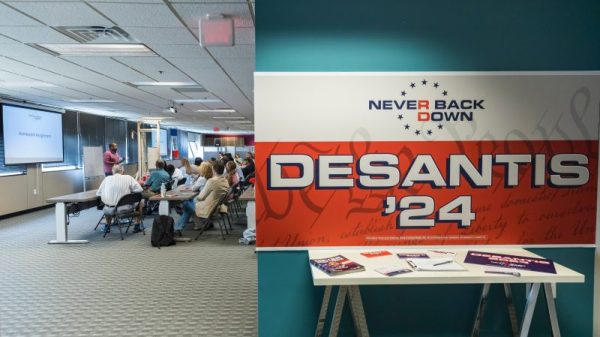President Biden, 80, and former president Donald Trump, 77, are among the luckier ones.
Biden has already outlived about 59 percent of American-born men in his age cohort, while former president Trump has outlived 47 percent of his cohort, according to an analysis of Social Security Administration data for people born in the 1940s by University of Pennsylvania professor Samuel Preston.
As the oldest major party front-runners in American history — even with demanding schedules — they both remain physically capable. Both candidates have recent passing reports from their physicians and partake in healthy living habits — no smoking, no drinking, no hazardous labor.
Actuarial tables suggest they are far more likely than not to live through a second term if elected, and experts in aging say there is little reason to doubt their continued health during that time, given the enormous benefits of their socioeconomic status, including access to high-quality health care.
“I don’t think, unless something dramatic comes out during the campaign, that age will be a major factor,” said Steven N. Austad, who studies healthy aging at the University of Alabama at Birmingham.
But those assurances have not yet convinced much of the voting public. The near consensus among scientists who study aging — based on generalized probability, not individualized certainty — has run headlong into a demonstrable fear that time is not on the side of Biden or Trump.
Only 1 in 3 Americans say Biden is mentally sharp and physically healthy enough to hold office, according to an April Washington Post poll, compared with 54 percent who are confident in Trump’s mental fitness and 64 percent who say he is in good enough physical health to be president. A separate NBC News poll completed in June found 55 percent had “major concerns” about whether Biden had the necessary physical and mental health to be president, while 44 percent had “major concerns” about Trump.
Such worries spring from hard realities. The risk of illness and death increases steadily with age as the ability to put in full days of work drops off. Just 6 percent of octogenarians remained in the workforce in 2019, according to Bureau of Labor Statistics data.
But those who study the topic caution that people age at widely different rates and chronological age is often an inaccurate predictor of how well they will fare in later years. A 65-year-old may be as physically and cognitively compromised as a typical 75-year old. An 85 year-old may be as mentally sharp and physically capable as a younger person.
Four experts consulted by The Washington Post said Biden and Trump were likely to retain the cognitive and physical abilities to perform as president between 2025 and 2029 — unless they suffer a serious illness or injury. A fifth said it is too difficult to predict how well any individual will do, but agreed that Biden and Trump are more likely than an average person to retain their capabilities.
“Genetics determines maximum life expectancy and lifestyle determines the actual life expectancy, which is always less,” said Pinchas Cohen, dean of the University of Southern California’s Leonard Davis School of Gerontology.
Morgan Levine, founding principal investigator of Altos Labs in San Diego, has studied the impact of lifestyle and environment on longevity and health, and believes that Zip code is a reliable predictor of late-life health and cognitive outcomes.
People — like Biden and Trump — that are raised with good health care, live in economically stable homes with nutritious food, attend good schools and have recreational opportunities develop a reserve that buffers decline, she said.
“Socioeconomic status and education are huge predictors of cognitive function,” Levine said. Environment and behavior are “getting under the skin and actually affecting our biology,” she said.
Three actuarial approaches consulted by The Post suggest a risk of death in a second term that remains low, even if it is much higher than the risks for their younger competitors like former United Nation’s ambassador Nikki Haley, 51, and Florida Gov. Ron DeSantis (R), 44. Depending on the methodology, the models showed a 14 to 31 percent risk of death for Biden’s cohort before the end of his second term. The risk for Trump’s cohort in the same time period was between 13 and 22 percent.
“If you are getting a number like a 25 percent chance of dying, then the true number might actually be 30 percent or 20 percent, but it is significantly bigger than zero,” said Andrew John George Cairnes, a mathematics professor at Heroit Watt University in Scotland who develops mortality models. “And ultimately you only get one roll of the dice anyway.”
Andrew Bates, a White House spokesman, pointed to Biden’s recent successes, including a recent NATO summit in Helsinki, the same city in Finland where Trump had defended Russian President Vladimir Putin’s denials of any interference in U.S. elections.
“As President Biden displayed in Helsinki — strengthening our national security instead of undermining it — his experience, drive, and values have rebuilt the alliances the last administration tore apart,’ Bates said in a statement. “Because of those same qualities, President Biden transformed the economic freefall he inherited into the strongest recovery in the world.”
Steven Cheung, a spokesman for the Trump campaign, said the contrast between Trump and Biden could not be more clear.
“President Trump is running laps around everyone and has exponentially more energy than the entire field combined,” Cheung said in a statement.
The good news for both men is that more specific mortality models, which take into account factors like their education, wealth, marital status, avoidance of tobacco and even their bloodwork, show they will fare better in the coming years than broader models for other non-Hispanic White male Americans in their age group.
Publicly disclosed doctor letters for Biden in 2023 and Trump in 2020 described both men as healthy. Biden, who exercises at least five days a week, is treated for high cholesterol, an irregular heartbeat, gastroesophageal reflux, spinal arthritis, and mild neuropathy in his feet. Biden’s father lived to 92 and his mother to 86.
Where he differs from Trump is his attention to physical fitness and diet. At 6 feet tall and 178 pounds, Biden has a healthy Body Mass Index of 24.1, according to the Feb. 16 medical review released by the White House. The document says he works out at least five days a week.
Like Biden, Trump does not smoke or drink and enjoys the advantages of affluence. Those include access to good health care and nutrition, and favorable living conditions in low-crime and low-stress environments. His mother lived to 88 and his father to 93 after suffering from Alzheimer’s disease for about five years.
Trump, by contrast, has not disclosed exercise beyond golf and has been known to consume a diet high in fat and red meat. He has not released any health documents since leaving office but appears to be in the same overweight to mildly obese condition he was as president. Both men have recovered from coronavirus infections.
There is some reason to believe that both men belong to a subgroup of Americans that have even more favorable prognoses than most aging studies suggest. U.S. presidents and British royalty, for example, historically live longer than others in their generation, according to studies by S. Jay Olshansky, a professor of Public Health at the University of Illinois at Chicago. Other presidents have governed despite significant illnesses in office, including John F. Kennedy, who struggled with an autoimmune disease of his adrenal glands, and Woodrow Wilson, who was incapacitated after a stroke near the end of his presidency.
Olshansky credits the longevity of such leaders to the benefits of their social status. As of 2011, 23 of 34 presidents who died of natural causes lived beyond the average life expectancy for men of the same age when they were inaugurated, suggesting the possibility that the sort of person who can compete for and win the job may have some health advantages.
Before the 2020 election, Olshansky pulled together an expert panel that concluded, based on medical records, that both Biden and Trump are likely to be “super-agers — a subgroup of people that maintain their mental and physical functioning into late life and tend to live longer than the average person their age.” Olshansky said he will repeat the analysis when the 2024 field is narrowed to two candidates.
At the same time, Olshansky argues that voters should not use probability models as a primary method for picking leaders, since such data omit all the other more obvious factors that matter in elections, like the policies the candidates support and their leadership style.
“If you zero in on the survival probabilities, you are always going to pick someone younger because their probability of living is higher,” he said.
The mortality models consulted for this story took into account different specifics about each man’s circumstance. They do not take into account possible nonfatal illness or injury that could prevent the candidates from fully carrying out their terms in office. Two of the models incorporated factors like obesity and exercise routines, and one of those even included the bloodwork results that both men have disclosed publicly. One simply compared both leaders to other American men of the same age, sex, race and ethnicity.
Because age is such a dominant factor in mortality risk, the models consistently showed Biden to have a larger risk of dying than Trump in a second term, despite the former president’s higher weight, cholesterol and lower physical activity.
The 2019 Life Tables prepared by the National Center for Health Statistics, which accounts U.S. death rates in the last year before the coronavirus pandemic, offers a place to start, says Preston, a professor of sociology who studies mortality.
Using the statistics for all similarly aged non-Hispanic, White American men, regardless of health, income and education, Biden’s cohort has a 31 percent chance of dying between inauguration in January 2025 and the end of their term in January 2029, Preston said. Trump’s cohort has a 22 percent chance of dying.
Olshansky has built a different model with the financial firm Wealthspan Financial Partners that uses peer-reviewed studies to adjust mortality databases based on established biological, behavioral and social determinants that are known to affect longevity.
Taking into account marital status, body mass index, education level, tobacco and alcohol use, publicly disclosed fitness regime, as well as publicly released medical information like cholesterol levels and blood pressure, his model finds that Biden’s cohort has a 23 percent chance of death by his 86th birthday in his last year in office. Trump’s cohort has a 16 percent chance of death by his 82nd birthday.
Yet another approach by Dean Foster, an emeritus professor of statistics at the University of Pennsylvania, uses a large study undertaken by AARP and the National Institutes of Health, which surveyed about 550,000 healthy Americans between the ages of 50 and 70 in the 1990s. The study then recorded the deaths of their survey participants by using public records, creating a method for estimating the risks of various conditions and behaviors in the later years of life.
The model takes into account body mass, race, gender, alcohol and tobacco use, education, marital status, income, retirement age, fitness regimes, diabetic status and self-assessments of general health. It finds that Biden’s and Trump’s cohorts have an identical 14 percent chance of dying in the next six years, if they rate their health as excellent. This assumes Biden exercises five or more days a week, while Trump exercises one to two times a week. If Trump is placed in a cohort that exercises five or more days a week, then his chance of dying in the same period drops to 13 percent.
If the two men only rate their health as good, the risk of death goes to 21 percent for Biden and 19 percent for Trump.
The actuarial risk of death for Biden and Trump’s competitors is much lower. According to the 2019 Life Table, non-Hispanic, White, American men in the United States that are Biden’s age have a 5.6 percent chance of dying in the next year. For Trump’s cohort, the risk is 4.2 percent. By contrast, the non-Hispanic, Asian cohort of Republican candidate Vivek Ramaswamy, 37, has a one-year risk of death of 0.08 percent. For DeSantis, 44, the risk of death in one year is 0.3 percent.
Women tend to live longer than men, giving them a slight advantage in mortality tables. Democrat Marianne Williamson, 71, comes from a cohort that has a one-year risk of 1.6 percent. Haley, 51, comes from a cohort that has a one-year risk of 0.1 percent.
None of those one-year numbers take into account the potential lifestyle or biological advantages of the individual candidates. But the bottom line remains: Time, ultimately, is not on anyone’s side.
“Raw age is certainly the most important thing,” Foster said of the mortality tables.
But the same realities do not foreclose either man from serving out a second term. In an April appearance on Fox News, Haley offered a prediction of her own about Biden. “The idea that he would make it until 86 years old is not something that I think is likely,” she said.
Available data does not back that up.





